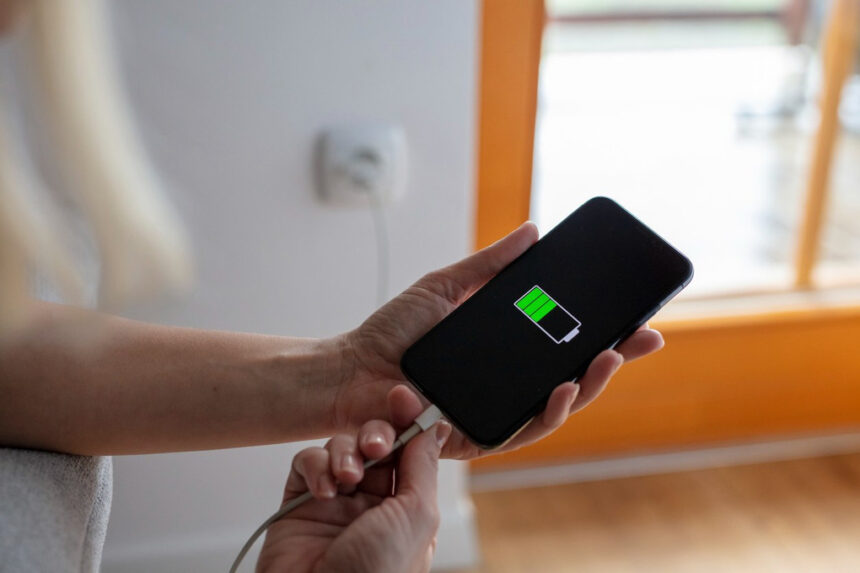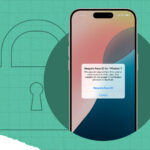Battery life is one of the most common frustrations for smartphone users. As our devices become more powerful, they also demand more energy, leaving many people reaching for a charger halfway through the day. This is why it’s important to know how to extend your phone’s battery life.
While hardware limitations exist, you can dramatically extend your phone’s battery life by making smart adjustments to your settings and habits. This guide takes you step-by-step through actionable changes that work on both Android and iOS devices.
1. Optimize Display Settings
Your screen is the biggest power consumer on your phone. Managing it wisely can save hours of usage.
- Lower screen brightness manually or enable adaptive/auto-brightness so it adjusts based on your surroundings.
- Enable Dark Mode if your phone has an OLED or AMOLED display. Black pixels use less power, which translates to real energy savings.
- Reduce your screen timeout (auto-lock) to 30 seconds or 1 minute, so the screen shuts off quickly when not in use.
- Turn off Always-On Display (common on newer Android phones), which keeps part of the screen lit all the time.
2. Control Background Activity
Apps often run processes when you’re not actively using them. These background tasks drain your battery quietly.
- On iPhone, disable Background App Refresh for apps that don’t need constant updates.
- On Android, go to Battery > Background Usage and restrict apps that consume the most energy.
- Disable auto-sync for email and social media if real-time updates aren’t essential, manual refresh can save a lot of power.
3. Manage Connectivity Smartly
Your phone uses power to stay connected, even when you’re not actively browsing or streaming.
- Turn off Wi-Fi, Bluetooth, or mobile data when you don’t need them.
- Use Airplane Mode when you’re in poor network areas, otherwise, your phone keeps searching for signal, which is a huge drain.
- Prefer Wi-Fi over mobile data where possible. Cellular connections typically consume more energy than Wi-Fi.
- Turn off 5G if your phone supports it but your area doesn’t have strong coverage. Sticking with 4G LTE can save hours of battery.
4. Leverage Battery Saver Modes
Both iOS and Android include built-in power-saving features.
- Low Power Mode (iOS): Reduces performance, background refresh, and visual effects to extend battery.
- Battery Saver (Android): Adjusts CPU performance and restricts background processes.
- Some Android devices also offer Extreme Battery Saver or Ultra Power Saving Mode, which can make a few percent last for hours by limiting your phone to essential apps only.
5. Location and GPS Settings
Location services are essential for maps and ride-hailing apps but don’t need to be on 24/7.
- Change app permissions to While Using the App instead of Always.
- Turn off Bluetooth scanning and Wi-Fi scanning in your location settings (Android) to stop constant background searches.
- Use manual location toggling when needed instead of leaving it always on.
6. Notification and Sync Management
Every ping, vibration, and screen wake-up consumes power.
- Turn off push notifications for apps that aren’t mission-critical.
- Disable vibration feedback for calls and messages—vibration motors use more energy than simple sounds.
- Switch off auto-sync for cloud services and schedule updates instead.
7. Keep Software Updated
Updates aren’t just for features, they often include power optimization and bug fixes. Keeping your phone’s OS and apps up to date helps reduce unnecessary battery drain.
8. Temperature and Charging Habits
Battery health matters as much as daily usage.
- Avoid exposing your phone to extreme heat or cold, as both can degrade battery performance.
- Don’t let your battery hit 0% too often, keeping it between 20–80% is better for long-term health.
- Use certified chargers and avoid cheap knock-offs that can affect efficiency.
9. Advanced Settings for Power Users
If you want to go beyond the basics:
- Limit background processes in developer options (Android).
- Use adaptive battery (Android) or optimized battery charging (iPhone) to learn your habits and reduce strain.
- Monitor your Battery Usage statistics to identify which apps drain the most and take action.
FAQs on How to Extend Your Phone’s Battery Life with Simple Settings
Is it bad to leave my phone charging overnight?
No, modern phones stop charging at 100%, but staying at full charge for long periods may generate heat, which isn’t ideal. This is why it’s important to know how to extend your phone’s battery life.
Does turning off 5G really help save battery?
Yes, 5G uses more power than 4G, especially in areas with weak 5G coverage.
Should I close apps running in the background?
Not necessarily. Closing and reopening apps often consumes more battery than letting them idle. Restricting background refresh is better.
Does wireless charging affect battery health?
Not directly, but wireless charging can generate more heat than wired charging, which may impact long-term health.
What’s the best charging routine for long battery lifespan?
Keep your phone between 20–80% charge and avoid frequent full discharges.





